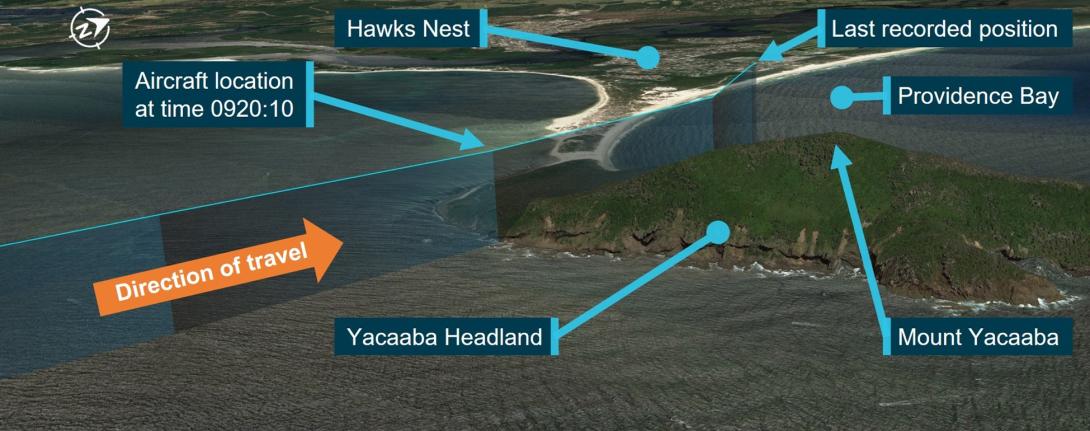
The Australian Transport Safety Bureau has released a preliminary report from its ongoing investigation into a Robinson R66 helicopter’s in-flight break-up and collision with water near Hawks Nest, NSW on 26 October 2023.
“Today’s preliminary report provides factual information from the initial evidence gathering phase of the investigation, including detailing this tragic accident’s sequence of events,” ATSB Chief Commissioner Angus Mitchell said.
About half an hour before the accident, the helicopter departed Cessnock for Wallis Island, on the NSW north coast, and initially tracked east towards Newcastle, flying close to the cloud base, which was between 500 ft and 1,000 ft above ground level.
Approaching the coast, the pilot received clearance from Williamtown air traffic control to transit Williamtown airspace northbound at 500 ft above mean sea level (AMSL).
As the helicopter reached Anna Bay, Williamtown air traffic control then provided the pilot with a further clearance to follow the coastal VFR route below 2,000 ft AMSL.
“The helicopter’s onboard video camera showed at this time that the helicopter’s autopilot was engaged, with heading hold and altitude mode selected,” ATSB Chief Commissioner Angus Mitchell said.
As it tracked towards Hawks Nest, the helicopter passed over the south shoreline of Yacaaba Headland, to the west of Mount Yacaaba, at about 900 ft AMSL.
Analysis of the onboard video footage showed that the helicopter then experienced a series of initially minor changes in roll, pitch and yaw, and the pilot began to make cyclic inputs, overriding the autopilot.
“As the helicopter passed north of Yacaaba Headland and over Providence Bay it rolled left slightly, then right and left to bank angles of about 10 to 15 degrees. During this time, the nose remained pitched up at about 6 degrees and the helicopter climbed to about 1,100 ft AMSL,” Mr Mitchell said.
“Subsequently the helicopter’s nose pitched down and it rolled to the right, becoming completely inverted, and continuing to roll right to about 270 degrees.”
The ATSB’s subsequent wreckage examination determined that, during the accident sequence, the main rotor likely impacted the cabin and struck and separated the tail boom aft of the engine fairing.
The helicopter impacted the waters of Providence Bay, near Hawks Nest, and the pilot was fatally injured.
Mr Mitchell noted that the helicopter’s onboard camera is proving invaluable to the investigation, as it not only recorded the in-cabin visual and audio environment, but also captured GPS position, acceleration, and rotational speed.
“We were very fortunate that a roof panel to which the camera was mounted washed up on the beach near the accident site and was located by a member of the public who provided it to the NSW Police,” Mr Mitchell said.
“The video files and other recorded data were subsequently extracted from the camera memory module at the ATSB’s technical facilities in Canberra.”
Williamtown air traffic control radar and radio communications between the helicopter have also been retained by the ATSB for analysis.
“As we continue the investigation we will further analyse the onboard video, continue to examine recovered components, and look into flight planning and helicopter performance, amongst other aspects,” Mr Mitchell said.
“Investigators are also closely examining the meteorological conditions at the time of the accident, particularly in the immediate vicinity of Mount Yacaaba.”
The ATSB’s final investigation report will detail findings, any identified safety issues, and safety actions taken to address those.
“However, if we identify a critical safety issue during the course of the investigation that requires timely safety actions, we will immediately notify relevant parties.”
Read the preliminary report: Loss of control and in-flight break-up involving Robinson R66, VH-KFT, near Hawks Nest, New South Wales, on 26 October 2023


